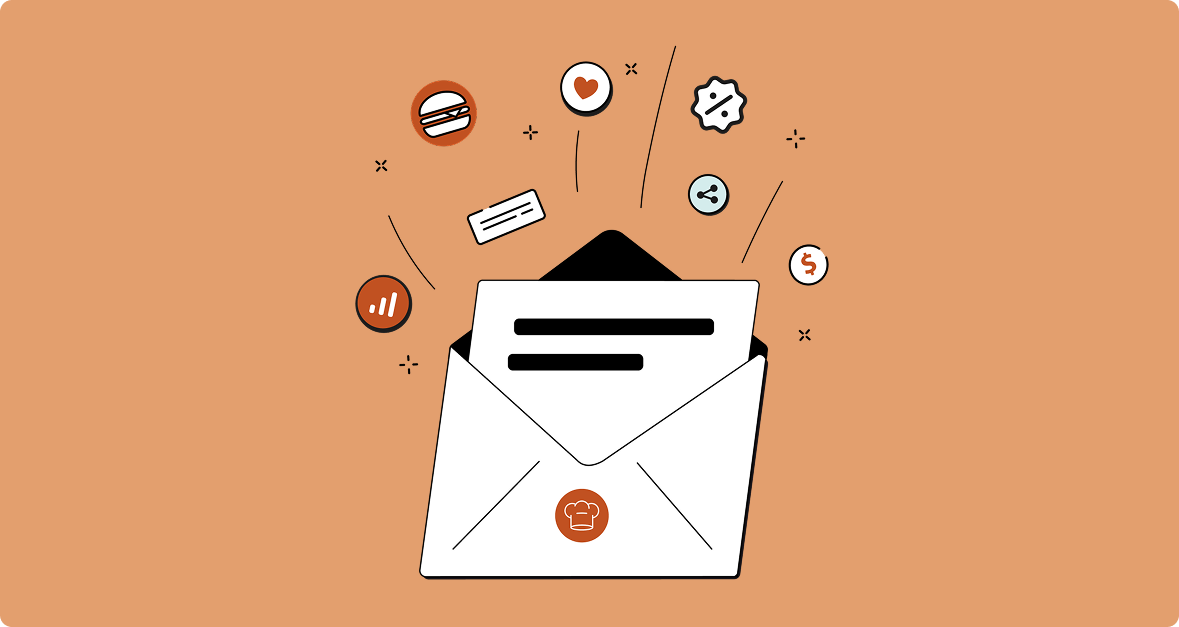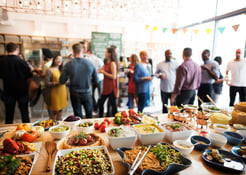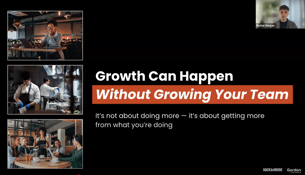Don’t let its fading popularity among teens fool you — whether you call it Facebook or Meta, the ubiquitous social network remains a powerful resource for restaurant operators and marketing teams across the industry. The site boasts more than two billion active monthly users, which makes for a massive audience of potential new regular customers.
You already have a dedicated Facebook page for your restaurant? That’s a good start, but you’re only just beginning to taste the site’s data-gathering and revenue-generating benefits. Familiarizing yourself with the site’s advertising features and building a program for executing campaigns will pay off with far more than just new followers.
Why Is Restaurant Advertising on Facebook So Important?
What makes Facebook such a powerful tool for restaurant advertising?
- You can reach a huge potential audience: At the risk of repeating ourselves, let’s keep looking at Facebook user statistics. The site boasts a huge U.S. user base that has grown by more than 10 percent over the last decade and stayed steady since 2016. Nearly 70 percent of Americans over 18 say they use Facebook, more than any social network besides YouTube. These days, TikTok may earn more headlines, but Facebook still attracts more than twice as many adult users.
- You can target the audience you want to reach: Facebook’s features for building and targeting custom audiences make it a go-to channel for restaurants of all types.
- You can customize your ads: Restaurant advertising on Facebook offers access to a range of formats and features to suit all types of campaign goals, whether you’re trying to sell a new dish or drive sign-ins for your mailing list. You won’t get nearly this many options running advertisements in local publications or putting up billboards.
- You can easily afford it: You can run an ad for as little as $3. If you start by running these small ads, you can see what resonates with your audience before you develop a whole campaign.
Restaurant Advertising on Facebook: Features and Tools To Know
To take full advantage of Facebook’s advertising features, you’ll first need to familiarize yourself with the site’s broad range of features for creating ads, targeting customers, and fine-tuning messaging.
- Instagram: Facebook bought Instagram back in 2012 and today the two sites are seamlessly integrated for cross-platform advertising programs. You can easily run Facebook and Instagram campaigns side by side and track their performance against the same KPIs (key performance indicators) without the need to toggle between the platforms.
- Facebook Pixels: You can’t kick off your new advertising program without first installing a Facebook Pixel on your website. This piece of code helps connect your site to Meta’s advertising tools so you can measure the performance of your ads, build audiences, and tailor your messaging to inspire the right actions. Don’t worry, you won’t need to learn programming to take advantage of Facebook Pixels.
- A/B testing: Facebook enables marketing and advertising to experiment, putting different versions of similar ads head to head. With one ad designated as “A” and the second designated “B,” you can calculate which images, copy, and calls to action will engage your target audiences best.
- Lookalike audiences: One of Facebook’s most powerful advertising features, lookalike audiences enable you to target Facebook users who check the same demographic boxes as your current customers — they “look like” the customers who already love you. Just upload an email marketing list and begin reaching out to prospects who may be especially likely to engage with posts, learn more, and visit your restaurant.
- Exclusion lists: These lists ensure specific users don’t see your ads. You might include current customers on your exclusion list if you’re interested in only targeting Facebook or Instagram users who have never stopped by your restaurant. Depending on your goals, these lists may prove even more useful than more traditional contact lists.
Facebook Ads for Restaurants: Selecting an Objective
You can’t succeed (or even define success) without first setting goals. Once you’ve established your Facebook advertising program’s overarching goals and an action plan, you’ll need to select objectives for individual advertisements and multi-ad campaigns.
These goals will guide you through defining your audience, picking your channels, and fine-tuning your copy. Most importantly, your goals will determine the calls to action featured in each of your ads. Ask yourself, “What do I want customers to do?”


Subscribe to Our Monthly Marketing Newsletter
Get proven strategies and tools to attract new customers, boost engagement, and grow your brand.
Facebook’s Ad Manager offers a range of objectives. Together, they cover the full buyer’s journey from awareness through conversion. In February of 2024, Meta/Facebook pared down its list from a hefty 11 to just six.
Here’s the simplified list of objectives for restaurant advertising on Facebook along with some details on how to succeed with each one:
Awareness
These ads target a broad, top-of-funnel audience. Most of the Facebook and Instagram users who will come across an awareness ad aren’t familiar with your restaurant yet.
You can also run awareness ads to people who already know your restaurant when change is happening — when you want to introduce a new menu item, kick-start a rebrand, or start to enroll customers in a loyalty program, for instance.
Traffic
Traffic here refers to online traffic, not foot traffic to your bricks-and-mortar business. If you’re looking to drive customers to a specific online destination, then traffic ads are for you. You can use them to direct customers to browse a specific page on your restaurant’s website, such as an ordering page or a page describing your catering services.
Engagement
Different types of engagement ads aim to inspire different types of activities, such as liking a specific page or RSVPing for an event. To get the most out of these ads, you may want to appoint a team member or hire a provider to handle community management.
Leads
The leads objective fits advertisements that aim to bring new contacts into a sales pipeline. These ads are great for ongoing projects and for generating long-term loyalty. If, for example, you’re planning to add a loyalty program, leads-focused ads can collect contact data for a more robust promotional campaign later.
App Promotion
If your restaurant has its own mobile ordering application, this type of advertising campaign targets users who are likely to install the app and sign up.
Sales
Finally, the sales objective prompts users to fill their carts and make a purchase. Restaurants with integrated online ordering can use these ads to seamlessly turn Facebook impressions into delivery dollars. Customers won’t be able to resist ordering favorite menu items with just a few clicks.
What Goes into a Facebook Ad?
Users build Facebook ads for restaurants by filling out five sections.
- Text: The most important piece of all, your copy entices potential customers and shares essential details.
- Headline: A short, sweet statement to hook users and offer basic information.
- Image: A unique image to illustrate your restaurant’s offering and communicate its personality will tie the ad together.
- Call to action: Your CTA encourages users to take a specific action, potentially providing you with useful data for tailoring future ads and audience lists.
- Phone number: Including your phone number ensures customers can follow through on their part of your CTA to book a reservation, sign up for a loyalty program, or place an order.
Creating Great Facebook Ads for Restaurants
There’s no single recipe for a great Facebook ad, but high-performing campaigns tend to include many of the same components.
- Well-defined audience: First, remember to take advantage of location tagging to cast an appropriately wide net. Then, you can send different messages to users from different age or demographic groups or create audiences based on interests. The right audience parameters will ensure your budget goes as far as possible while your ads hit the right feeds.
Try building “buyer personas” to create lookalike audiences. Build your ideal customer based on customer data (like age, gender, income level, buying habits). Are there types of people who are especially likely to visit your location, or do you have a gap in your customer base that you’re eager to fill?
- High-quality photos: Don’t leave customers to rely on Yelp snapshots or their imaginations. Instead, snap some eye-catching photos of your own. Close-up images of appetizing dishes are especially crucial, but don’t forget about pleasant table settings and smiling customers. These unique images will compel prospects to become customers, while stock imagery might just strike them as strangely familiar.
Don’t load your imagery with text or snap photos of your menu to capture detailed descriptions. Facebook rejects ads that feature too much text. Save some rework by letting a high-quality photograph or custom graphic do most of the talking. With carousel ads, you can show off a handful of images at once and appeal to a range of appetites.
- Mobile optimization: A whopping 94 percent of all Facebook advertising revenue comes from mobile users. If you’ve gotten in the habit of treating mobile-friendly design as a “nice to have,” now’s the time to rethink your approach to targeting potential customers.
Putting mobile first isn’t just essential if you hope to get the most from restaurant advertising on Facebook. It’s essential if you hope to get anything out of the platform. Don’t send anything out before you’ve tested it on phone screens and tailored it to activate mobile consumers.
More Tips for Getting the Most from Restaurant Ads for Facebook
Follow these best practices to set yourself apart with better ads and a more dependable restaurant advertising program.
- Keep it fresh: Do you like hearing the same ad on the radio ten times during your daily commute? What about when you’re watching your team and each timeout brings the same exact commercials? You might want to scream or change the channel, but you certainly won’t feel inclined to buy whatever they’re selling. Restaurant advertising on Facebook isn’t much different. If you annoy your customers with repetitive copy and imagery, they’ll begin to resent your restaurant before they’ve ever visited it.
While consistent messaging is key, variety ensures you pique curiosity without beginning to get on Facebook users’ nerves. Whether or not you rotate your menu with the seasons, look for opportunities to build campaigns around the changing months. A great timely ad creates a sense of urgency, encouraging users to visit soon rather than filing your restaurant away.
- Reward existing customers: Not sure where to start with your advertising campaigns? Look no further than your loyal customers and recent visitors. You can incentivize engagement with your initial batch of ads to kick things off with a bang. Try sharing a promo code or inviting users to enter a raffle.
You may even win some free advertising. Once satisfied customers have shared their gratitude on Facebook or Instagram, you’ll reach a whole new audience of potential followers and visitors.
- Monitor your performance: Launching advertising campaigns isn’t a matter of “set it and forget it.” Failure to review your performance, reflect on your successes or shortcomings, and make data-driven updates means settling for less.
Your approach to advertising on social media should echo your approach to the items on your menu. The tone and contents of your ads should shift to suit evolving tastes while taking into account feedback from customers, insights gained from competitive research, and emerging trends.
One Last Piece of Advice
Talk to a pro about your restaurant’s next steps. If you’ve already built an effective marketing and advertising program for your restaurant, you’re probably no stranger to building partnerships and benefiting from third-party support. Schedule a conversation with me or another Back of House expert and learn how to get more from your tech and advertising spend.





